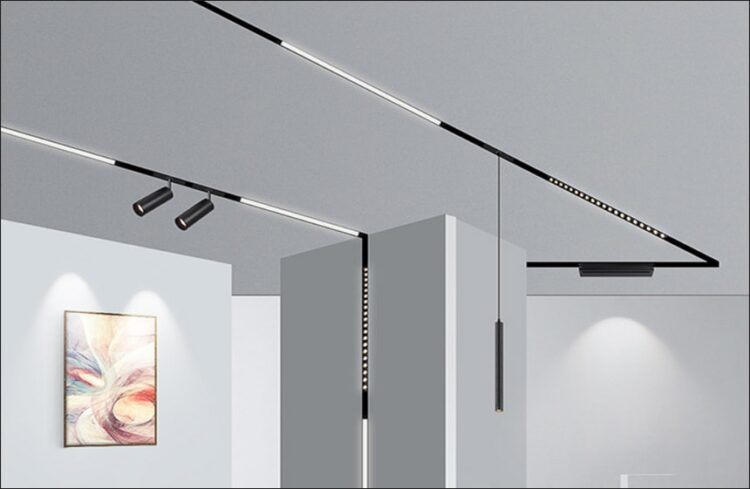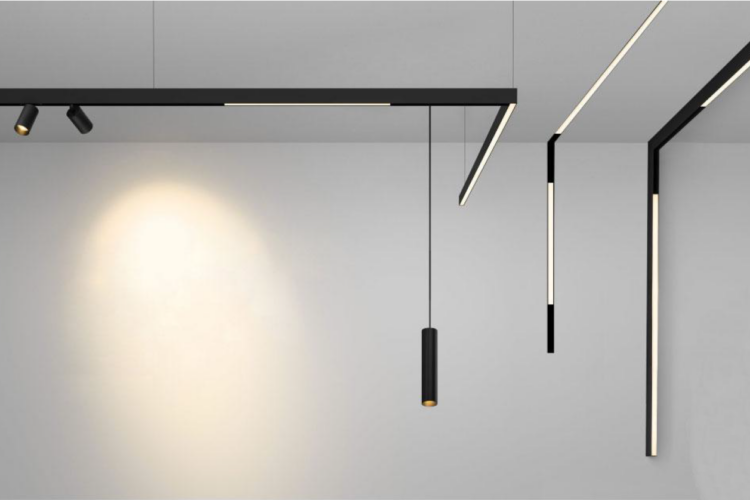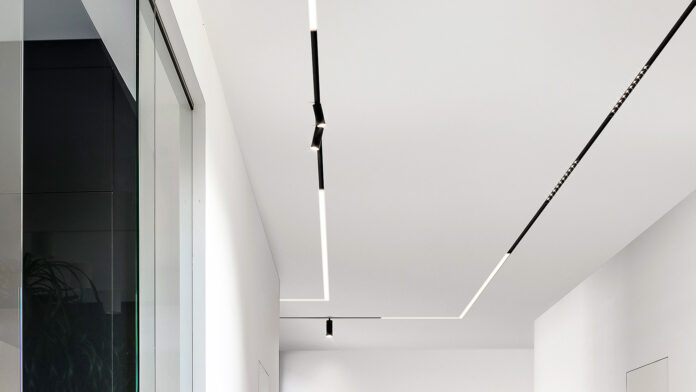Are you curious about magnetic track lighting systems? Have you ever seen them and wondered how they work? Discover the unique technology behind them and the many ways they can be used to light up your home in this blog post!
Types of Magnetic Track Lighting Systems

Magnetic track lighting systems come in a variety of styles, so it’s important to determine what type best suits your needs. Here are some of the common types:
- Mono-rail – A single-track rail is used for installation. This style is most commonly used in commercial settings.
- Bi-rail – Also known as ‘twin rail’, these have two tracks running parallel to each other, giving you more freedom when designing and placing lights.
- Multi-rail – It has 3 or more rails installed at various angles, usually radiating out from a center point. This gives you the flexibility to place lights precisely where you need them.
- FlexRail -A hybrid between mono and multi-rail systems, this system features tracks that can bend and curve to fit in intricate spaces.
All these systems use special fixtures with magnets that allow them to attach directly onto the tracks without the need for tools or manual fasteners such as screws or wires. As long as your fixtures are compatible with the track you’ve chosen, installation is a breeze!
Installation of Magnetic Track Lighting Systems

Installing it is an ideal way to add accent lighting, spotlights and overall illumination to any space. They are made up of two components: the track and the lights. Track lighting is mounted on the ceiling in a continuous strip, while lights chosen based on desired effects plug into the track.
The most common type is a diameter rod, typically metal or aluminum, with two “live” steel core wires running along its sides. One stripped wire carries electricity from one end of the track to the other, while another acts as a conductor for each light along its path. This type is extremely versatile – you can install multiple lengths of tracks that cross each other or run parallel in order to give off unlimited amounts of light in any pattern or direction desired.
Lights connect directly to tracks by plugging into electrical connectors found at intervals along each side. Lights come in both 12-volt (halogen) and 120-volt (incandescent). With halogen bulbs installed on the magnetic ballast assembly, they can be dimmed without having an additional dimmer switch installed – making them much safer and more energy efficient than incandescent models which require placement near an outlet. Halogen bulbs also have a long lifespan up to five thousand hours.
For complete installation instructions consult your manufacturer’s instructions that should come with your package or search online for installation advice specific to your model’s local code regulations. Be sure to always follow safety guidelines for handling electricity and adhere strictly when cutting tracks for installing breakoffs throughout your home or business space when necessary electrical installations are involved.
How Magnetic Track Lighting Systems Work

They are a cutting-edge lighting solution designed to make a range of fixtures and bulbs easy to install without the need for traditional wiring. They use an integrated ‘track’ that holds power in the form of electromagnetic energy, with components that can be attached quickly and easily at different lengths along the length of the track.
A single conductor ‘track’ contains two or more wires known as ‘rails’. These rails transport electricity from one end to another. The length of each rail consists of conductive contacts placed evenly along its entire length. Each contact point has magnets at either end with opposite polarities that provide power for the fixtures and bulbs connected throughout it.
At any point on the track, new components—such as additional lights, sensors or dimmers—can be added by simply sliding them onto one of these contact points, creating a seamless connection between all parts without having to open up walls or ceilings to run additional wires. This makes magnetic track lighting systems an ideal choice for both easy installation and long-term flexibility.
Connected components along this system will then receive electrical power while other lights beyond it will remain off until further required by connecting a fixture directly onto one of its contact points. Allowing homeowners to change their illumination design whenever they see fit or when trends dictate changes in style within a small time frame, unlike traditional methods which require extensive renovations prior to installation completion.
Advantages of Magnetic Track Lighting Systems

They offer a versatile lighting option with a simple installation process. They are composed of magnetic tracks in a variety of lengths, power feeds and other components that allow multiple mounting options, as well as easy repositioning of the lights. This makes them a great choice for residential and commercial venues alike. Here are some of the key advantages that come with using this type of system:
- Cost Savings: They provide an economical way to create a dramatic effect without the need for expensive wiring and installation labor costs.
- Safe to Install: Since no wiring is involved during installation, these systems are very safe to use, especially when compared to hardwired lighting solutions which require complex electrical wiring.
- Flexible Design Options: Magnetic track lighting systems can be used in virtually any space due to their flexible design options. They can be used for accent lighting, wall washing and other creative applications with minimal effort.
- Energy Efficient: They make it easy to reposition the lights whenever needed, allowing energy savings through targeted illumination rather than wasting energy on areas not in use. Additionally, LED bulbs further enhance efficiency by consuming significantly less energy than conventional ones.
Conclusion
They are an energy-efficient and cost-effective option for commercial and residential lighting. They offer many advantages over traditional lighting sources, including flexibility and design versatility. Magnetic systems offer a wide range of lighting effects that can be easily controlled with their built-in sensors, while their modular design makes them highly customizable and easy to install. As the need for increased security and energy savings continues to grow, magnetic track lighting will continue to be a popular choice among homeowners and professional contractors alike.







